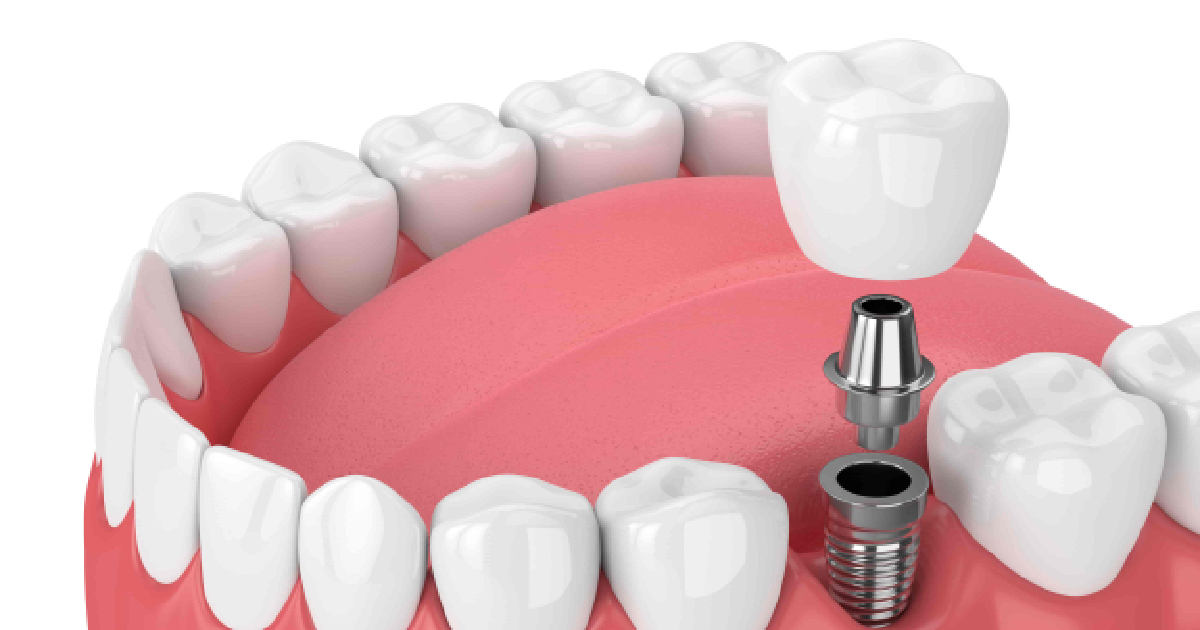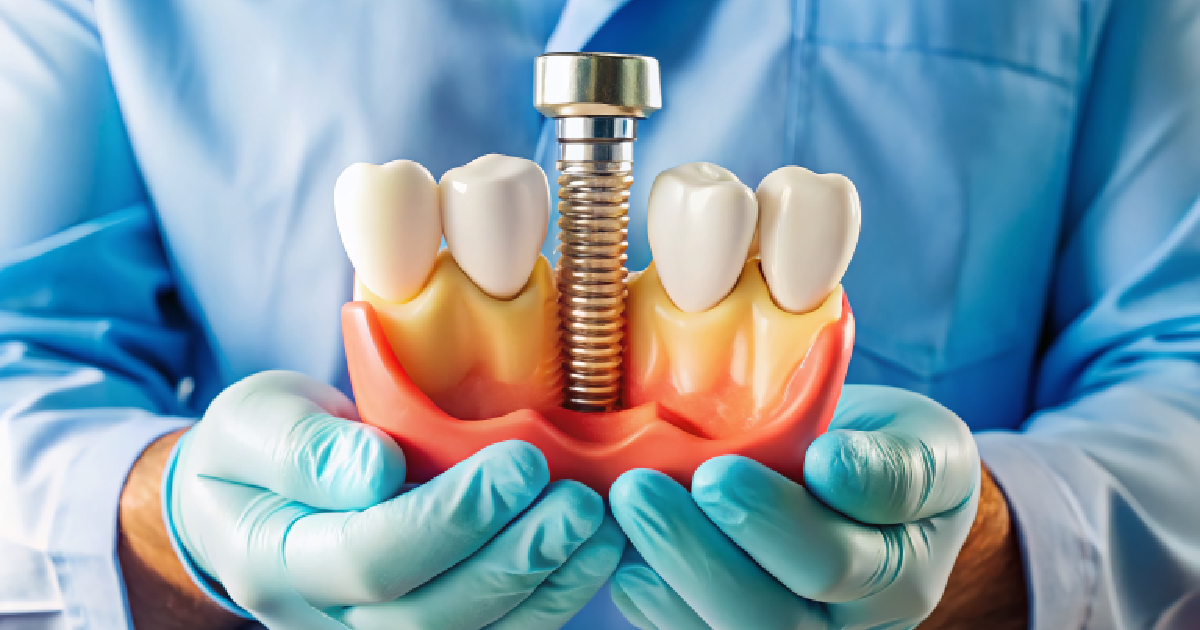Dental implants have improved the way dentists approach missing teeth. Gone are the days of worrying about slipping dentures or the discomfort of bridges. If you’re considering this procedure, or just curious about it, you’re in the right place.
Dental implants aren’t just about restoring your smile; they bring back functionality and comfort, elements crucial to your oral health. But how do you know if they’re right for you? What does the procedure involve? And what about aftercare? Here’s what you should know.
What Are Dental Implants?
Dental implants are a game-changer in dental care, providing a permanent solution for missing teeth. So, what exactly are they? Imagine a small, sturdy post, typically made of titanium, which acts like a tooth root. This post is surgically placed into your jawbone. Over time, it fuses with your bone, creating a strong, lasting foundation. That’s the secret behind their stability.
But it doesn’t end there. Attached to this post is an abutment, a connector, and the crown. The crown is the visible part, designed to look and feel like your natural tooth. What sets dental implants apart is how they mimic the structure of natural teeth. Unlike dentures or bridges, which sit on the gum’s surface, implants go deeper, anchoring firmly in your jaw. This not only helps with chewing and speaking but also maintains the health of your jawbone, containing the bone loss that often comes with missing teeth.
They blend seamlessly with your natural teeth, offering aesthetic and functional benefits. It’s like getting a new tooth that feels and works just like the original. With proper care, these implants can last a lifetime.
The Need for Dental Implants
First off, they’re not just about aesthetics, though they certainly help in bringing back that confident smile. The real need for dental implants goes deeper – literally and figuratively.
Losing a tooth isn’t just a cosmetic issue. It can lead to a cascade of problems. The gap left by the missing tooth can force the remaining teeth to shift, leading to misalignment. This can affect how you chew and even how you speak. But there’s more. The jawbone, which needs stimulation from teeth to maintain its density, begins to deteriorate when a tooth is missing. This can alter the shape of your face over time, giving it a sunken appearance.
Dental implants tackle these issues head-on. They provide the stimulation your jawbone needs, preventing bone loss. They also ensure that your remaining teeth stay aligned by filling in the gap. And, unlike dentures or bridges, they’re firmly anchored, so there’s no worry about them slipping or causing discomfort.
Candidates for Dental Implants
Not everyone is a perfect fit for dental implants. It’s like finding the right pair of shoes; certain criteria need to be met for a snug and comfortable fit. The ideal candidates for dental implants are those with good overall oral health. This means having healthy gums and enough bone in the jaw to support the implant. If your gums are prone to inflammation or have suffered significant bone loss in your jaw, it might be trickier, but not always a deal-breaker.
Those who smoke or have chronic disorders like diabetes or heart disease need to have a candid chat with their dentist. These conditions don’t automatically disqualify you but can affect the healing process after the implant surgery. It’s all about managing risks and ensuring your body can handle the procedure and recover smoothly.
Age isn’t a major factor here. Whether you’re in your twenties or enjoying your golden years, dental implants could be an option, provided the other health boxes are ticked.
The Dental Implant Procedure: Step-by-Step
Your dental team will be with you every step of the way, from the initial consultation to the definitive placement of the crown. The result? A sturdy, functional, and visually appealing replacement for your missing tooth.
- Fitting the Implants into the Jaw: This is the foundational stage. The effectiveness of a dental implant hinges on having enough healthy jawbone to anchor the post securely. If your jawbone isn’t quite ready, there’s no need to worry. Procedures like bone graft surgery or a sinus lift can build up the jaw to the required standard. Think of it as preparing the ground before laying the foundation of a house.
- Healing and Osseointegration: After the implant is snugly fitted into your jaw, it needs time to become one with your bone. This process, known as osseointegration, is crucial. The bone must fuse around the post, providing a stable base for the new tooth. This can take several months, but advancements like Zimmer® Trabecular Metal™ implants are designed to promote this fusion and potentially speed up healing. Patience here is key; it’s the groundwork for a lasting solution.
- Designing the Crowns: Once the implant is firmly integrated with your jawbone, it’s time for the crowns – the visible part of your restored smile. Your dentist uses technologies like the Encode® Impression System to scan the space and the surrounding teeth. This ensures that the new crown perfectly matches your existing teeth so seamlessly that it’s hard to tell which is which.
- Crown Placement Using CEREC® Technology: Solomon Family Dentistry takes this a step further with CEREC® same-day crown technology. This means your custom crowns can be created quickly, often in minutes, without sacrificing quality or aesthetics. The crowns are then fitted over the implants, completing the restoration process.
Takeaway
Are you prepared to move on with achieving a bright, self-assured smile? At Solomon Family Dentistry, the team offers excellent dental implants and other services that are customized to meet your specific requirements. You’re in good hands with our cutting-edge CEREC® same-day crown technology and Zimmer® Trabecular MetalTM implants. Don’t let missing teeth hold you back any longer. Book an appointment for your consultation with Solomon Family Dentistry right now to find out how we can help you get the smile of your dreams. This is where your road to a gorgeous, restored smile begins.





